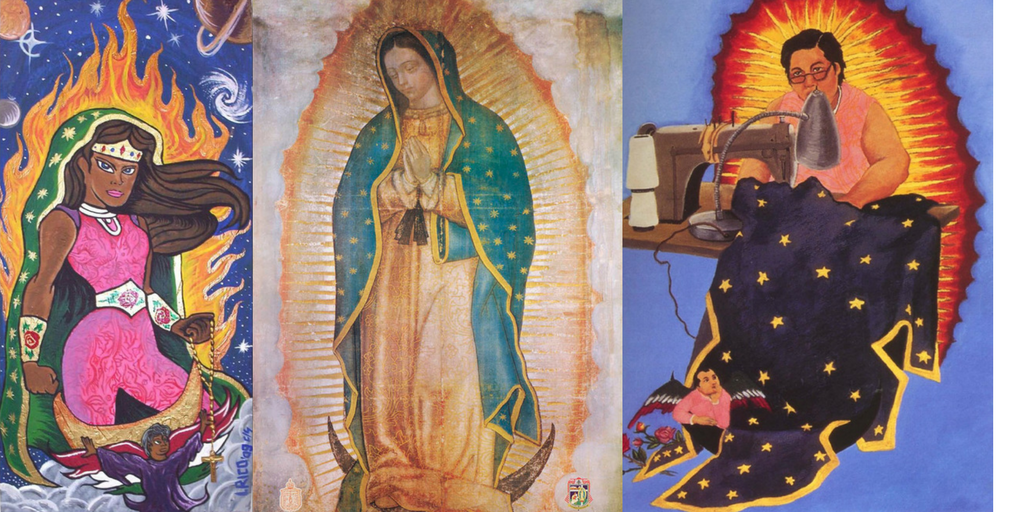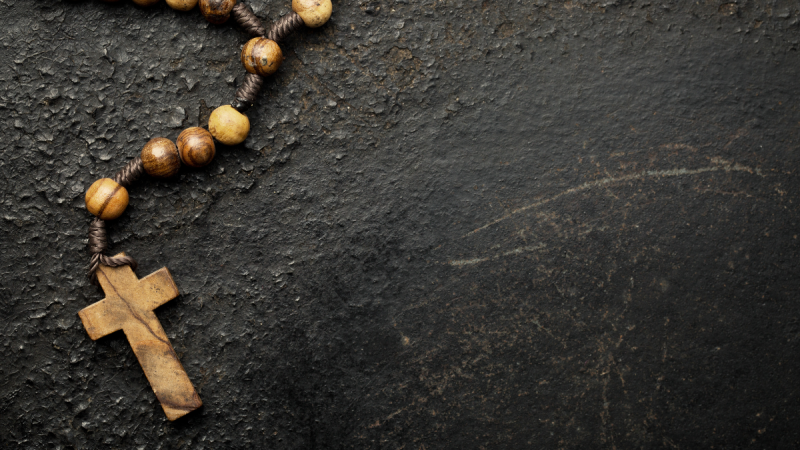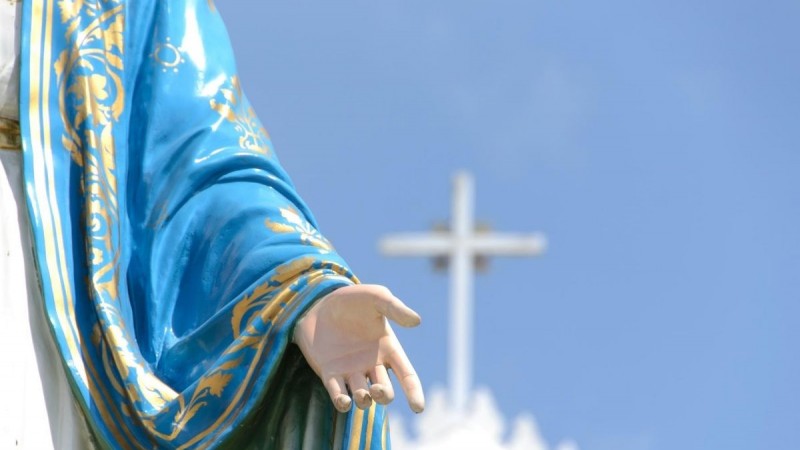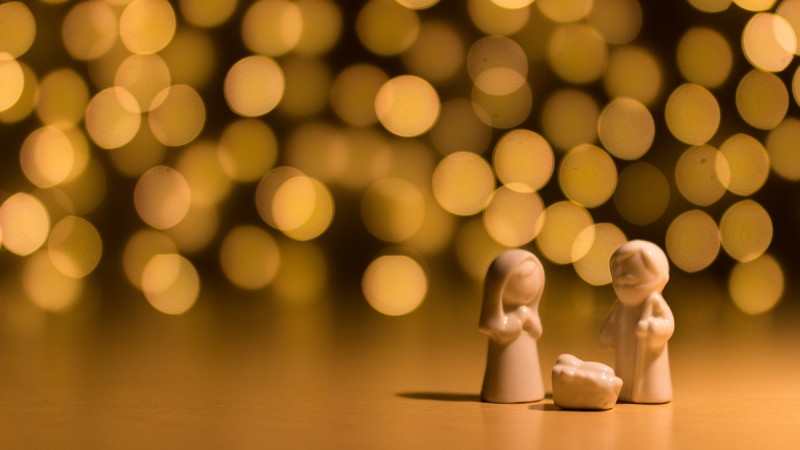
Commenting on Jen’s comment in my last post, I mentioned that it was hard to answer the question “who is Mary for me?” because throughout my life I’ve had different impressions of Mary. There’s the Mary I grew up with — the statue-esque Mary who is lily-white enameled, calm and serene, but also otherworldly, untouchable and frozen in her statue-esque form. I liked this Mary but I really couldn’t connect with her.
 One of the only image that I connected with was of the Pieta — that beautiful sculpture by Michaelangelo of Mary holding Jesus after he had been crucified. For some reason, even as a child, I could connect with Mary because I felt so badly for her. Here in this sculpture, the woman who seemed unconnected to me and to everything was now holding her son and I could only imagine the very human emotions that were coursing through her heart. This image gave me a new insight into and love for Mary.
One of the only image that I connected with was of the Pieta — that beautiful sculpture by Michaelangelo of Mary holding Jesus after he had been crucified. For some reason, even as a child, I could connect with Mary because I felt so badly for her. Here in this sculpture, the woman who seemed unconnected to me and to everything was now holding her son and I could only imagine the very human emotions that were coursing through her heart. This image gave me a new insight into and love for Mary.
Then there’s the Mary I’ve gotten to know since I was in my early 20s. I began to see that all the many, many “versions” of Mary out there — e.g., Black Madonna of Częstochowa, Our Lady of Guadalupe, Our Lady of Sorrows, Our Lady of the Wind, Madonna Della Strada, Our Lady of Fatima, and so on — bespoke a Mary who aligns herself with the people, whether they be fishermen sailing the Mediterranean or shepherd children in Fatima. I have always thought how cool it is that Mary has been rendered in so many different ways because she finds a way of connecting with people.
The image that has the deepest meaning for me is the Immaculate Heart of Mary. Since becoming a Sister, Servant of the Immaculate Heart of Mary (our full title as IHMs), I’ve wrestled a bit with what this image means to me. The Immaculate Heart of Mary has a strong devotional meaning to it, one which I’ve never really been able to connect with. Yet when Sisters talk about what the Immaculate Heart of Mary means to them, they remind me that Mary was a woman of heart — it was through her heart that she cared for Jesus and for others; that she pondered the things that were happening to her, her son and the world; and that she suffered as she saw her son rejected and killed. This the Mary that I connect with, the one who is willing to have her heart pierced for the sake of God. She is the woman who continues to reach out to all those whose hearts have been pierced through suffering, war, poverty, and violence.
What image of Mary speaks to you? Why do you connect with Mary in that way?
Archived Comments
- November 9, 2007 at 10:18 am
-
I was going to respond to your first reflection on Mary, but I think this fits better here. For me, Mary is the companion to the Everywoman who has deep faith in God, listens attentively and responds, who is a hard-working laborer, who lost a son before his time. I have encountered many Mary’s in my life, women who endure in the face of hardships and broken hearts. They fill refugee camps and nursing homes, they are war widows, they carry water and wood miles to their families, they have lost children to senseless violence, they tend fields and work in sweatshops… and they remain in constant dialogue with God throughout their lives. The most powerful image for me is a pietá by the German artist Käthe Kollwitz, known for her images of victims of war and poverty in early 20th Century Europe. In this sculpture, the mother is an older, heavy-boned peasant woman who cradles the broken body of her son in her lap.
- November 9, 2007 at 1:31 pm
-
When I was a teenager I wear a medal that had Jesus profile with Mary in the front . I always thought of Mary and her relationship with family. My favorite image is the Pieta, and seeing that in person for the first time last May, was a very spiritual experience. You could just feel her suffering…Mary for me has always been in my life as mother and comforter.
- November 9, 2007 at 8:11 pm
-
Interesting…I think your sisters’ descriptions of the immaculate heart of Mary resonates more with me. It’s a view of her that’s based in reality, not some abstract ideal.


